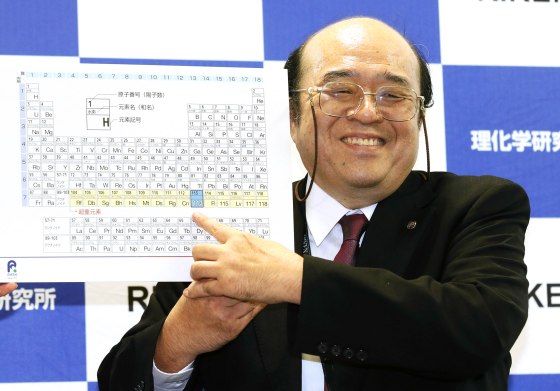Remember your periodic table from high school chemistry? As of Monday, it will look a little different.
Four new elements have been added to the tail end of the familiar chart, completing the seventh row. It's the first such addition in four years.
"The chemistry community is eager to see its most cherished table finally being completed down to the seventh row," said Jan Reedijk, president of inorganic chemistry research at the International Union of Pure and Applied Chemistry, the organization that verified the elements' discovery.
Read More: New Super-Heavy Element 115 is Confirmed
Element 113, so called because it has 113 protons, was isolated by a team at Japan's RIKEN research institute in 2012. Elements 115, 117 and 118 were discovered in collaborations between researchers in Dubna, Russia, and the U.S.'s Oak Ridge and Lawrence Livermore National Labs from 2010 to 2013. But before they can be confirmed and added to the periodic table, the scientists at IUPAC must carefully check the reports.
Fortunately, the IUPAC group concluded that all four elements have been successfully created — although some don't stick around for long, decaying quickly into lighter, more stable elements.
Read More: New Element 117 Vies for a Seat at the (Periodic) Table
Don't buy a new chart just yet, though. Next comes the formal naming process. The researchers who discovered the elements will be given the opportunity to submit names. At RIKEN, this will mark the first time a research group from Asia has had the opportunity to do so.
"We are excited about these new elements, and we thank the dedicated scientists who discovered them for their painstaking work," said IUPAC President Mark Cesa in a statement.

